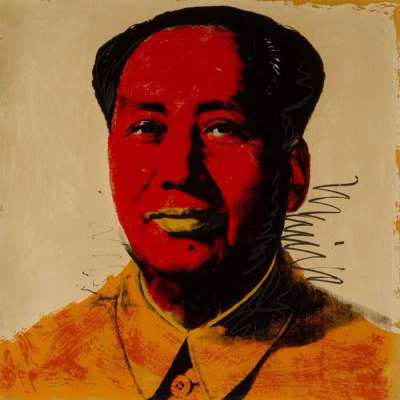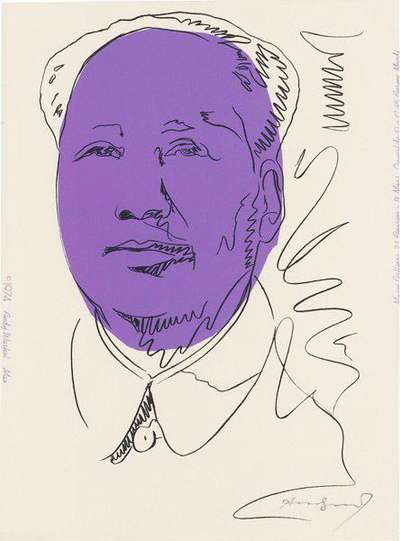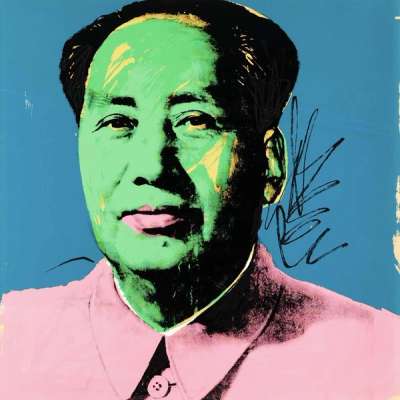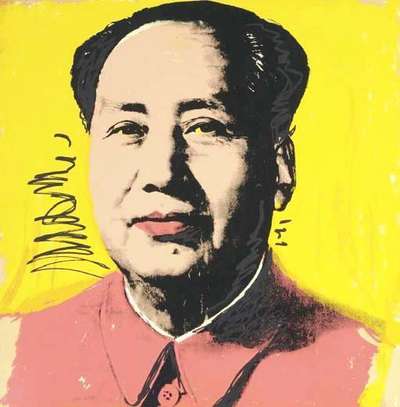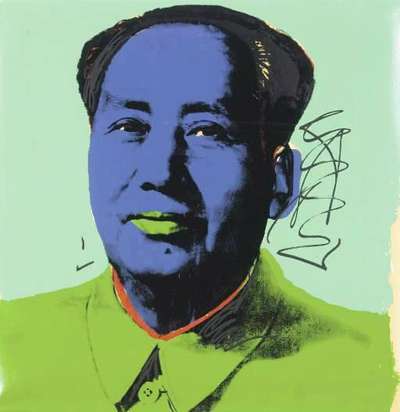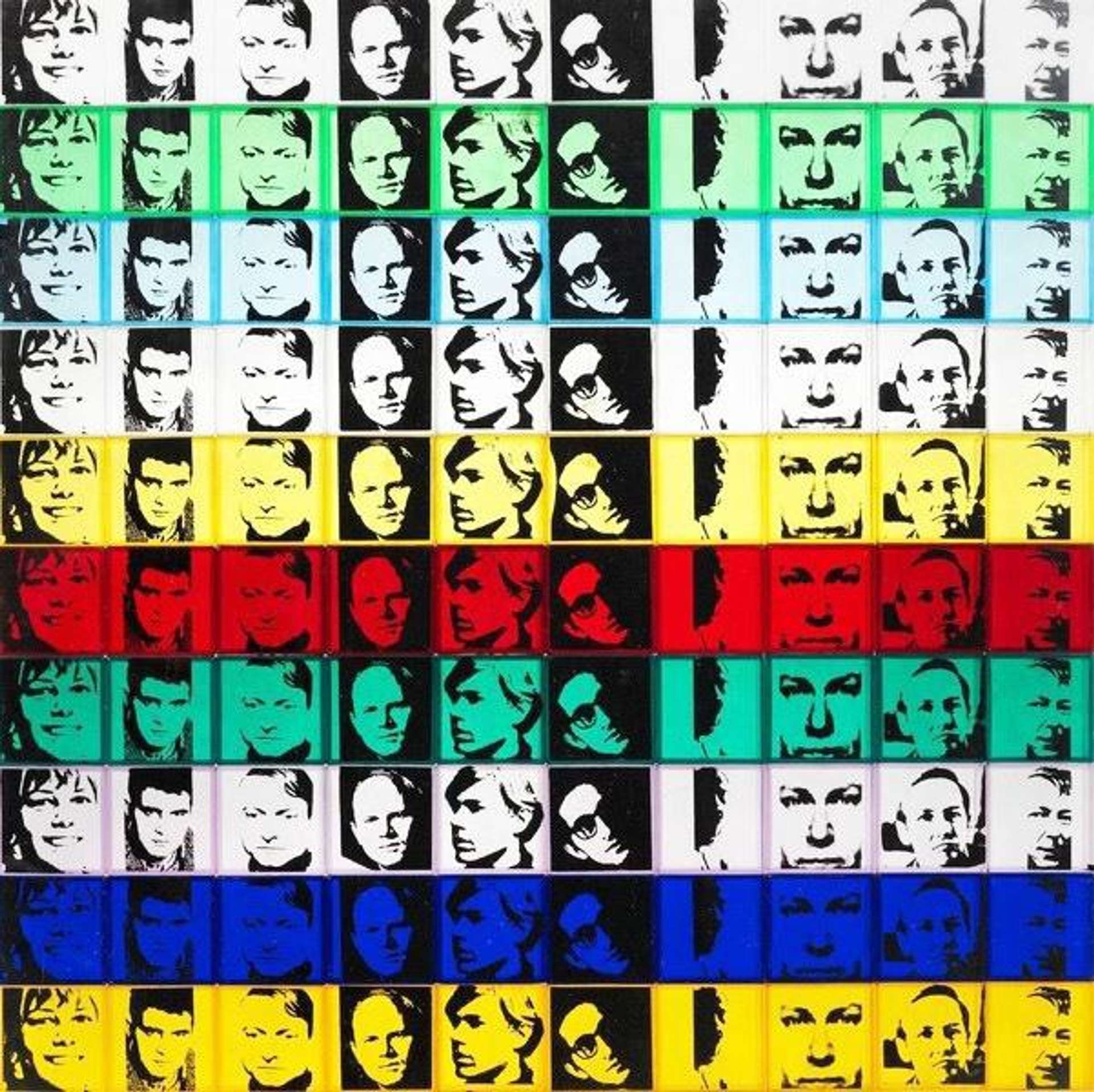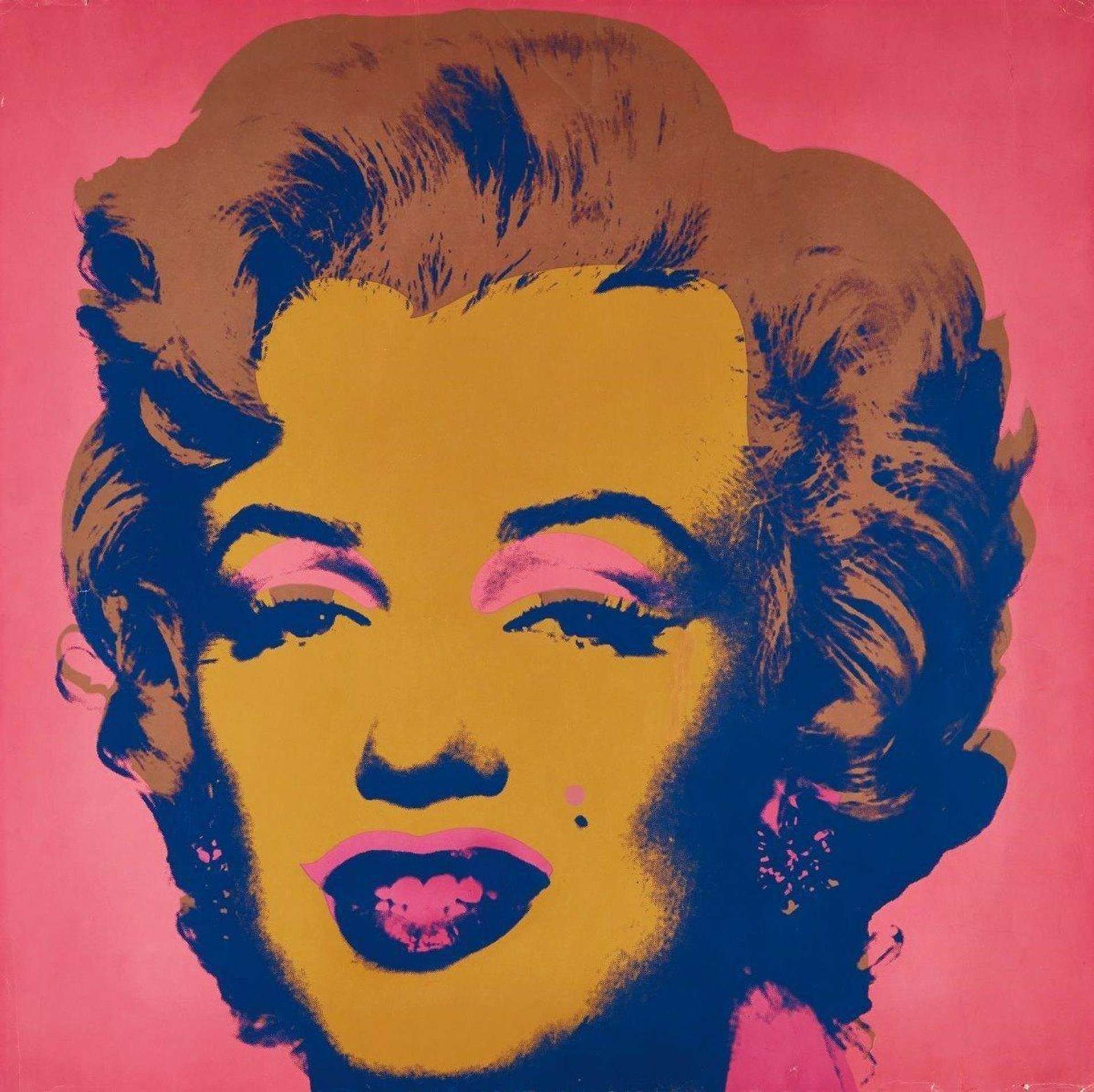 Mao (F & S 11.93) © Andy Warhol 1972
Mao (F & S 11.93) © Andy Warhol 1972 Andy Warhol's Mao prints are among his most recognisable, depicting the Chinese Communist leader in a range of saturated colour combinations.
To learn more about this iconic series, see our 10 facts here:
When did Andy Warhol paint Mao?
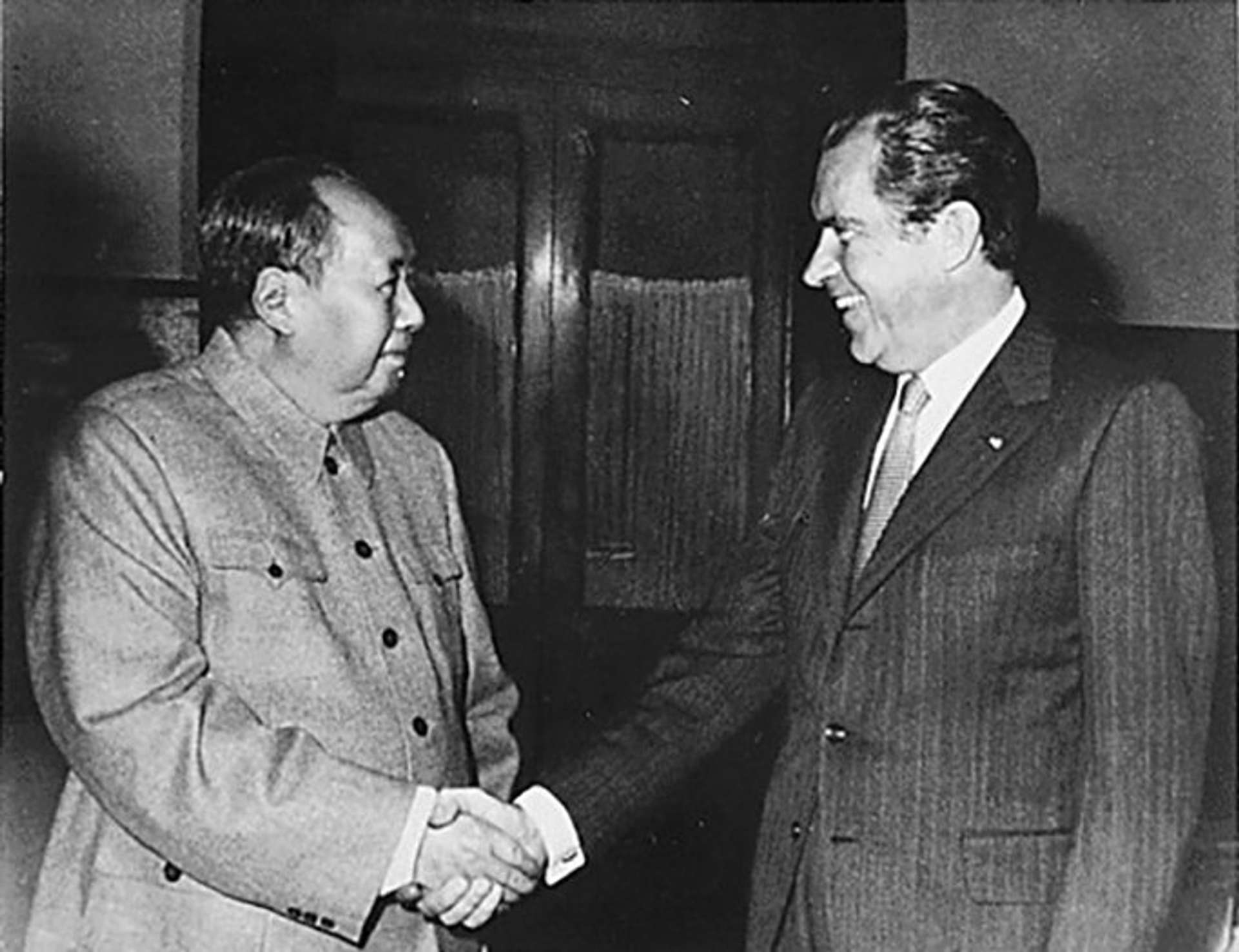 Image © White House Photo Office Collection (Nixon Administration), Public domain, via Wikimedia Commons
Image © White House Photo Office Collection (Nixon Administration), Public domain, via Wikimedia CommonsAndy Warhol began creating his Mao portrait series in 1972. They marked a momentous new political alliance. Also in 1972, President Richard Nixon travelled to China to meet with Chairman Mao Zedong (or Mao Tse Tung) to form a new political alliance between the US and China after years of isolation. The meeting was momentous and widely reported, and Mao’s image spread across the globe.
Warhol had been considering a return to portraiture around this time, with a proposed focus on an iconic image of Albert Einstein. The significance of this newfound diplomatic relationship changed his mind.
The original image of Mao had been distributed throughout China
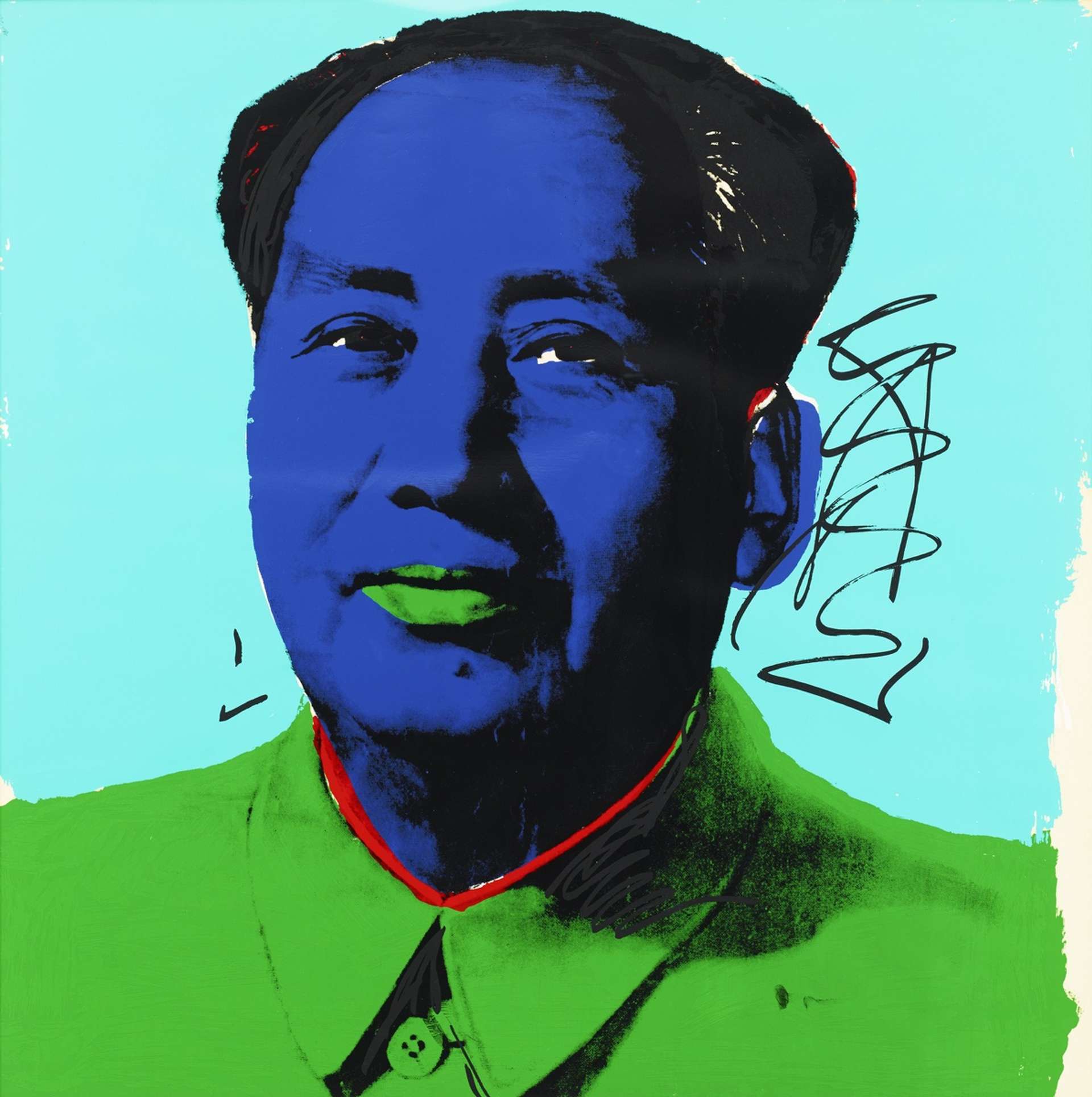 Mao (F. & S. II.99) © Andy Warhol 1972
Mao (F. & S. II.99) © Andy Warhol 1972For the Mao portraits, Warhol used a photograph from Mao’s “Little Red Book”, a collection of propaganda essays and quotes that spread the Chinese communist leader’s ideology across China during the Cultural Revolution (1966–76). The authority of Mao’s image on the Chinese population captured Warhol’s imagination, as he later said: “I have been reading so much about China. They’re so nutty. They don’t believe in creativity. The only picture they ever have is of Mao Zedong. It’s great. It looks like a silkscreen.”
Why did Warhol paint Mao Zedong?
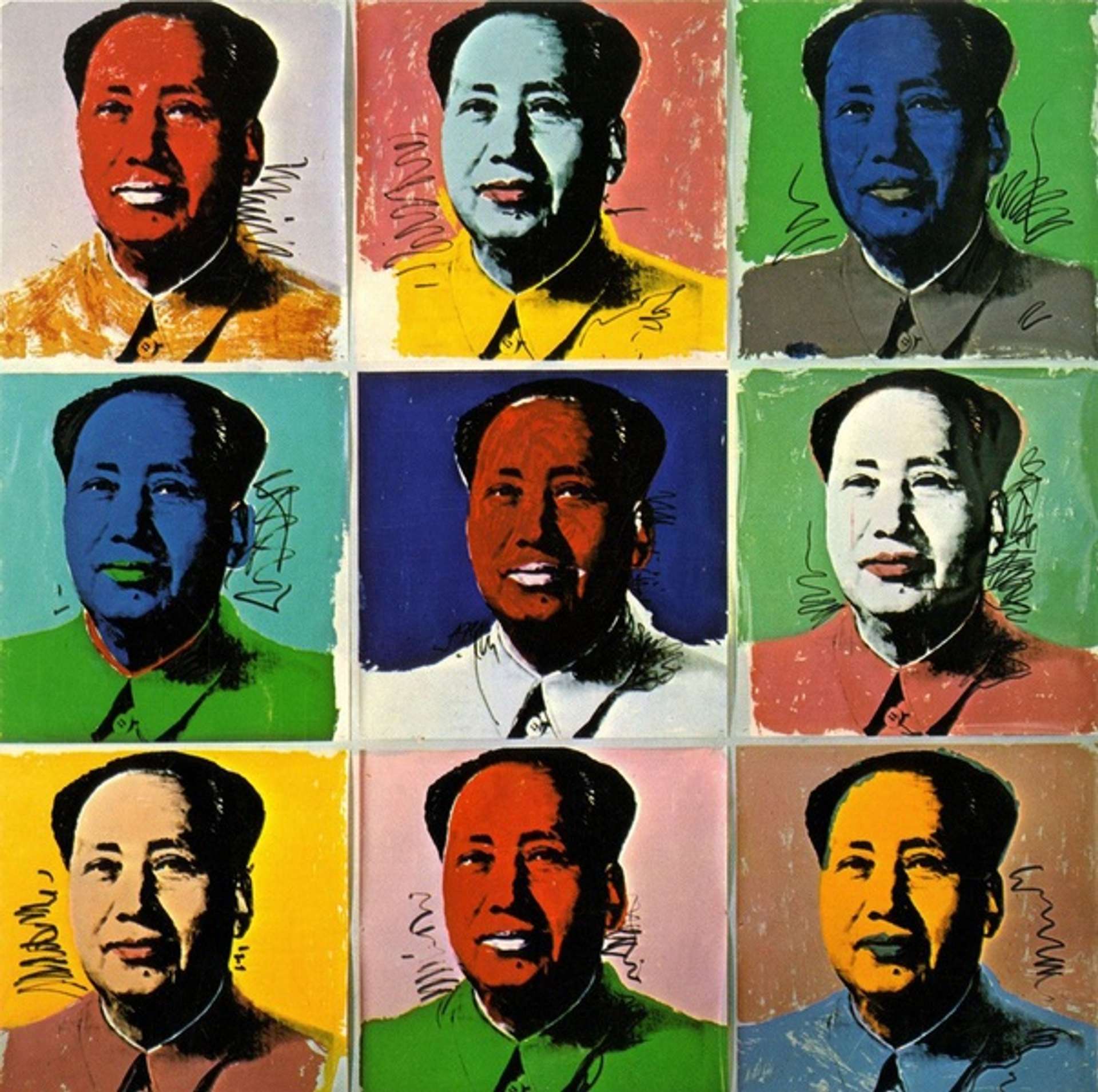 Mao Series © Andy Warhol 1972-73
Mao Series © Andy Warhol 1972-73In the 1960s, Warhol’s work previously dealt with celebrity, consumerism and capitalist culture. His most successful pieces had been largely apolitical, with exceptions like Birmingham Race Riot and a series on President John F. Kennedy’s widow, Jackie Kennedy.
After Nixon went to China in 1972, Warhol’s friend and dealer Bruno Bischofberger encouraged him to adopt Mao as his subject. It would be one of the artist’s first political portraits and works about international relations. In the same year, Warhol also depicted Richard Nixon and, years later, he would create a portrait of the Russian revolutionary leader Lenin and a series on international Reigning Queens.
The Mao paintings turned communism into capitalism
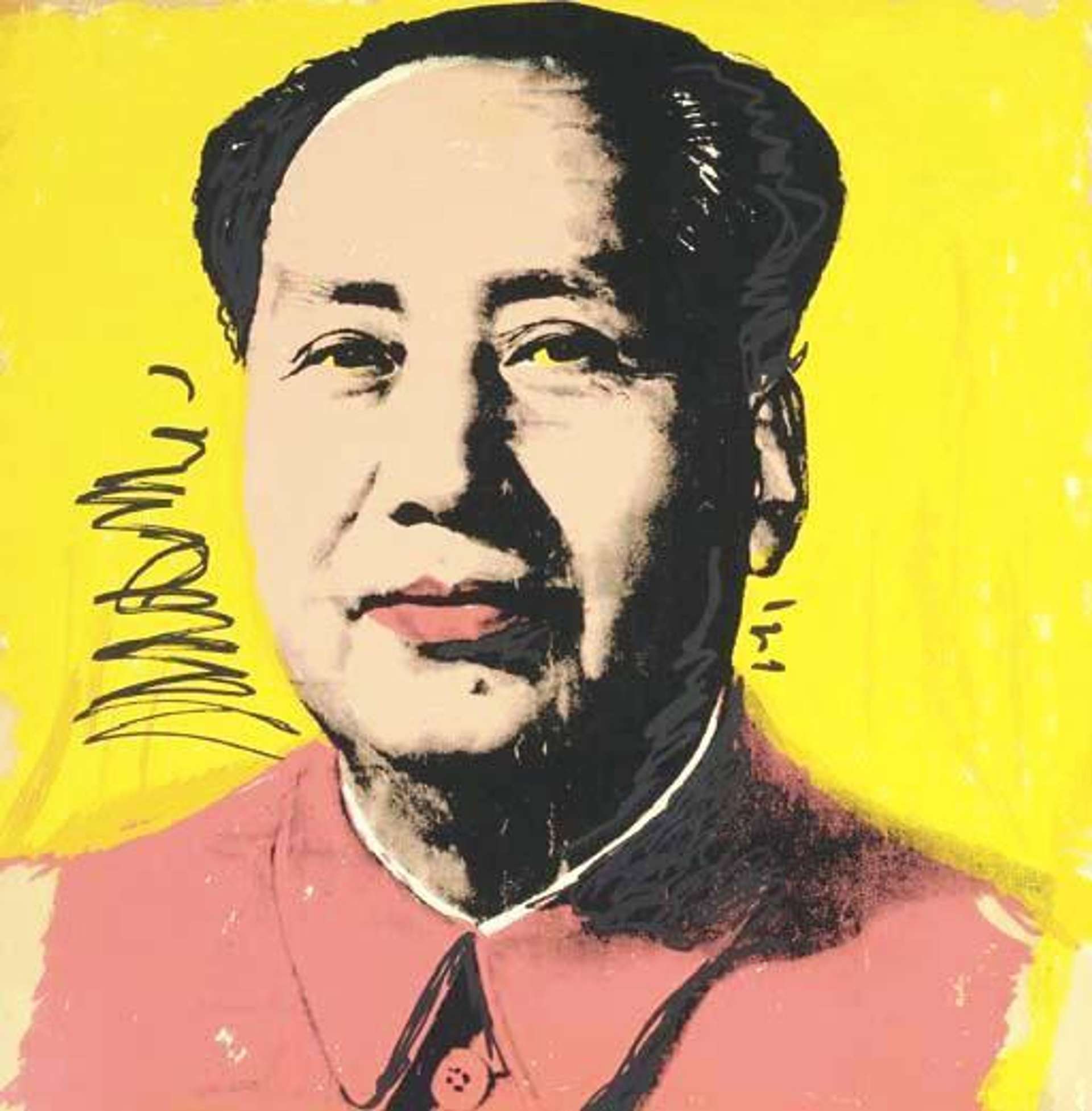 Mao (F. & S. II.97) © Andy Warhol 1972
Mao (F. & S. II.97) © Andy Warhol 1972The repetition of the Mao series has been interpreted as a commentary on the machinic function of propaganda and advertising. With its bold, artificial colours and mass-produced screenprinting technique, Warhol’s Mao prints turned the communist leader into a consumable object, like a Campbell’s soup can or a fashionable commodity – rather than a symbol of political ideology. “Since fashion is art now and Chinese is in fashion, I could make a lot of money,” said Warhol.
How many Andy Warhol Mao paintings are there?
 Mao (F. & S. II.93) © Andy Warhol 1972
Mao (F. & S. II.93) © Andy Warhol 1972Warhol created 209 Mao paintings in total. Between 1972–73, Warhol produced 199 Mao paintings in five series, as well as a series of 10 screenprints. Warhol is believed to have undertaken the first series himself, even though the screens were six feet tall – an impressive accomplishment.
The difficulties of the silkscreen process on such a large canvas resulted in the clogged colours and unique texture of the works. The later Mao paintings, which ranged from a colossal 14 feet tall to just four feet, were created in a range of different print, painting and mark-marking techniques. The final Mao painting was discovered in Warhol’s studio after his death, and simply consisted of a black outline printed on a plain canvas background.
Drake owns a Warhol Mao painting
The worlds of art and music collided in April 2020 when singer-songwriter Drake gave his fans a peek inside his home and art collection in the music video for Toosie Slide. Skip to 0:46 and you can see a few seconds of Warhol’s Mao 94 hanging on his wall. Drake’s chosen colourway shows Mao with orange skin and wearing a green tunic against a light pink background.
Warhol went to see a Mao portrait in Beijing
 Image © @dino is marked with CC BY-NC 2.0.
Image © @dino is marked with CC BY-NC 2.0.In October 1982, almost a decade after his first Mao painting, Warhol visited Hong Kong and Beijing, where he visited the portrait of Mao at Tiananmen Square.
“Andy actually thought the real Mao portrait was better than his, and really loved the original,” recalled Warhol’s friend and photographer, Christopher Makos, who accompanied him on this trip.
Where are Andy Warhol's Mao paintings?
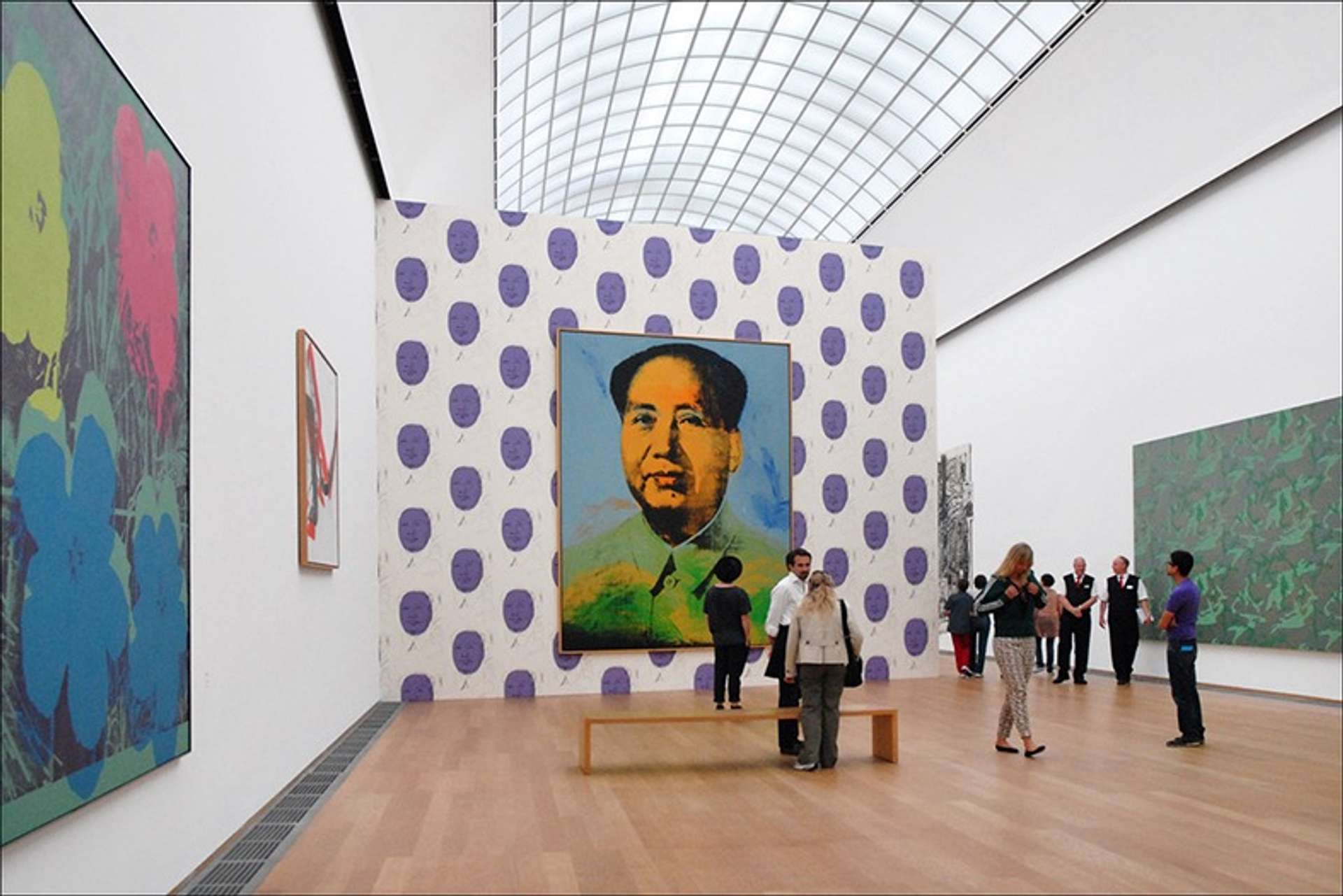 Image © Allie_Caulfield via Flickr, CC BY 2.0 / Mao © Andy Warhol 1972
Image © Allie_Caulfield via Flickr, CC BY 2.0 / Mao © Andy Warhol 1972Sought-after by collectors and curators alike, Warhol’s Mao paintings are in museums, galleries, and private collections around the world. In Europe, you can see Mao at the Froehlich Collection in Stuttgart and the Fundació Suñol in Barcelona. In the United States, Mao paintings are hanging in The Andy Warhol Museum in Pittsburgh and the Metropolitan Museum of Art in New York.
The most expensive Mao sold for US$47.5million
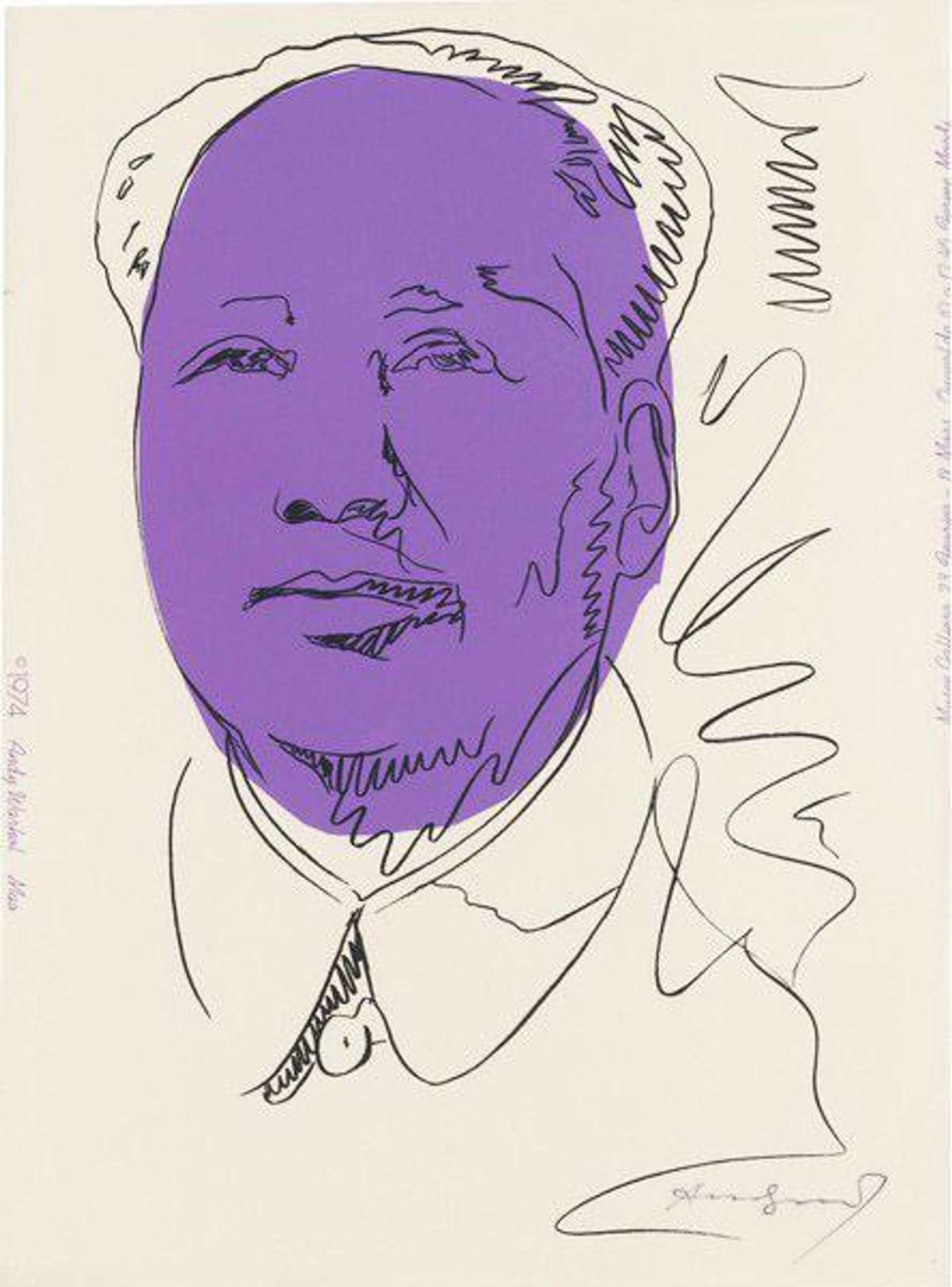 Mao (F. & S. II.125A) © Andy Warhol 1974
Mao (F. & S. II.125A) © Andy Warhol 1974The record price for a Warhol Mao painting at auction is US$47,514,000 (£31.2million), sold at Sotheby’s in New York on 11 November 2015. It was the second most expensive artwork of the sale.
On 2 April 2017, another Mao painting sold for HK$98,537,500 (£10.1million) at Sotheby’s in Hong Kong, setting a new record price for a Western contemporary work of art sold in Asia.
Mao paintings have been banned in China
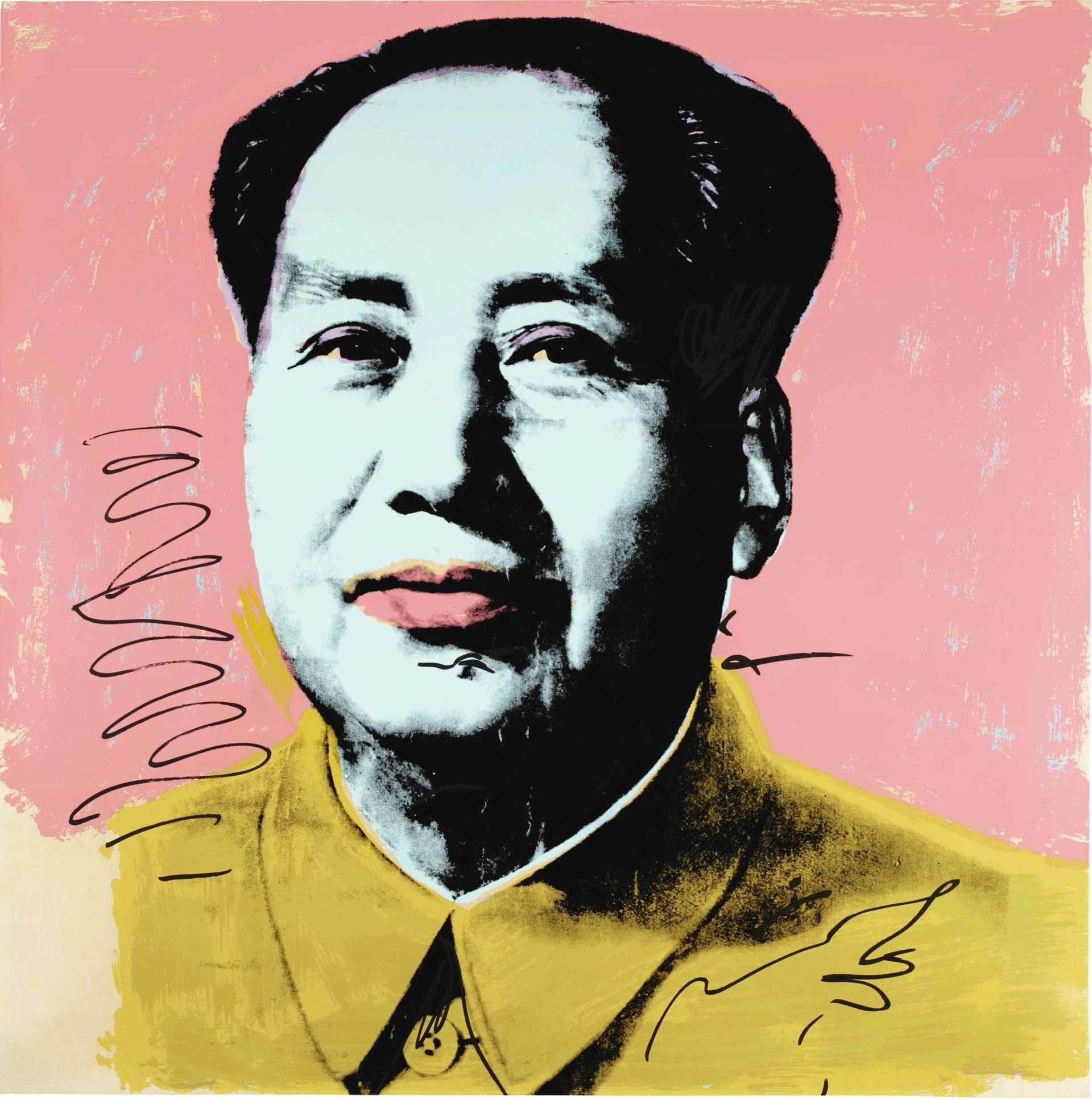 Mao (F. & S. II.91) © Andy Warhol 1972
Mao (F. & S. II.91) © Andy Warhol 1972In 2012, Beijing authorities banned the Andy Warhol Museum from showing 10 portraits of Mao on the Beijing and Shanghai stops of its touring exhibition, The Andy Warhol: 15 Minutes Eternal, for fear of political backlash. “Although we had hoped to include our Mao paintings in the exhibition to show Warhol’s keen interest in Chinese culture, we understand that certain imagery is still not able to be shown in China,” the Andy Warhol Museum said in a statement.
Another Warhol exhibition billed for July this year will bring together over 300 works from The Andy Warhol Museum in Pittsburgh to Beijing and Shanghai. It will be the most extensive collection of Warhol’s works ever to be displayed in China, but the museums have not confirmed if Mao will be included this time.



